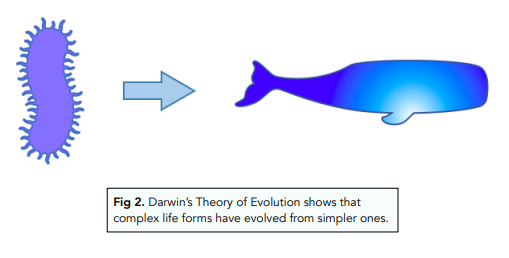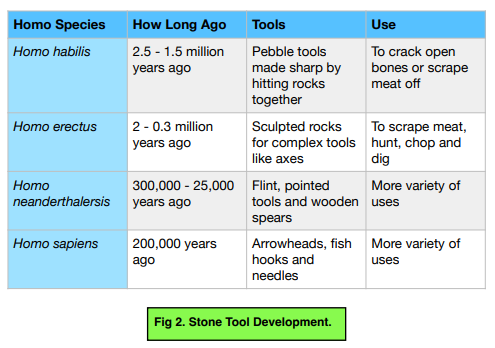Fossils & Extinction - Evidence for Evolution: Fossils (GCSE Biology)
Evidence for Evolution: Fossils
Fossils and Evolution
Fossils can also be used to prove evolution.
Fossils can be used to for dating and to record time. They give us a lot of evolutionary data.
- Fossils can corroborate Darwin’s Theory of Evolution by Natural Selection. As seen in Darwin’s theory of evolution, simple life forms developed into more complex ones. This can be seen in fossils, as the fossils of simpler organisms are found in older rocks, whereas the fossils of more complex organisms are found in newer rocks.

By watching the developments of fossils over time and comparing and contrasting their ages, scientists can track the development of life over time. This is difficult and involves conjecture, however can be used to get a brief understanding of development, pending further research.
Human Evolution
Human Evolution and Fossils
Fossils can also tells us about human evolution. Their evidence suggests that humans and chimpanzees come from a common ancestor.
Hominids is the name for humans and their ancestors and fossils of different hominid species have been discovered. These fossils help us see how humans have evolved over time and they have characteristics that are somewhere between humans and apes:
- A 4.4 million years old fossil hominid called ‘Ardi’ – this is a fossil of the species Ardipithecus ramidus which was found in Ethiopia. The fossil showed she had the following characteristics:
- Brain size was similar to chimpanzees
- Short legs but long arms like apes
- Feet structure suggested she climbed trees
- However, leg structure showed she walked upright without using her hands (which apes use)
- A 3.2 million years old fossil hominid called ‘Lucy’ – this is a fossil of the species Australopithecus afarensis which was also found in Ethiopia. The fossil showed she was more similar to humans than Ardi:
- Brain size slightly larger than Ardi’s
- Arm and leg sizes were in the middle of what you’d find in humans and apes
- Feet were more arched suggesting she walked rather than climbed trees
- Leg structure showed she walked upright more efficiently than Ardi
- 1.6 million years old fossil hominids found by Leaky – Richard Leaky and his team found many fossils from different Australopithecus and Homo species. These were found in Kenya in 1984 after the scientist organised an expedition. During this they found Turkana Boy, a 1.6 million years old fossil with features more similar to humans than Lucy:
- Brain size was larger than Lucy’s and similar to humans
- Arm and leg sizes were more human-like
- Legs and feet were more adapted to walking upright
Human Evolution and Stone Tools
Human evolution can also be proved by looking at stone tools. This is because the tools they used slowly became more and more complex proving that the human brain developed and grew in size:

Pentadactyl Limbs
Pentadactyl limbs are limbs with 5 digits. These can also provide evidence for evolution as pentadactyl limbs are found in different species e.g. mammals, amphibians and reptiles. This suggests that these species have come from a common ancestor.
Evolutionary Trees
- Evolutionary trees can be used to show evolutionary relationships between different types of organisms. The two trees below can be used to map relationships between organisms.
- In the second graph, all of the organisms have the same common ancestor. Each branch represents speciation. As all of the organisms come from the same first branch, they show that they are all from the same ancestor.
- The more and more the organisms branch from one another, the more different they become. Therefore, the Aquifex and Thermotoga are very similar to one another, however the Aquifex and the Diplomonads, although are from the same ancestor, are very different from one another.








Still got a question? Leave a comment
Leave a comment